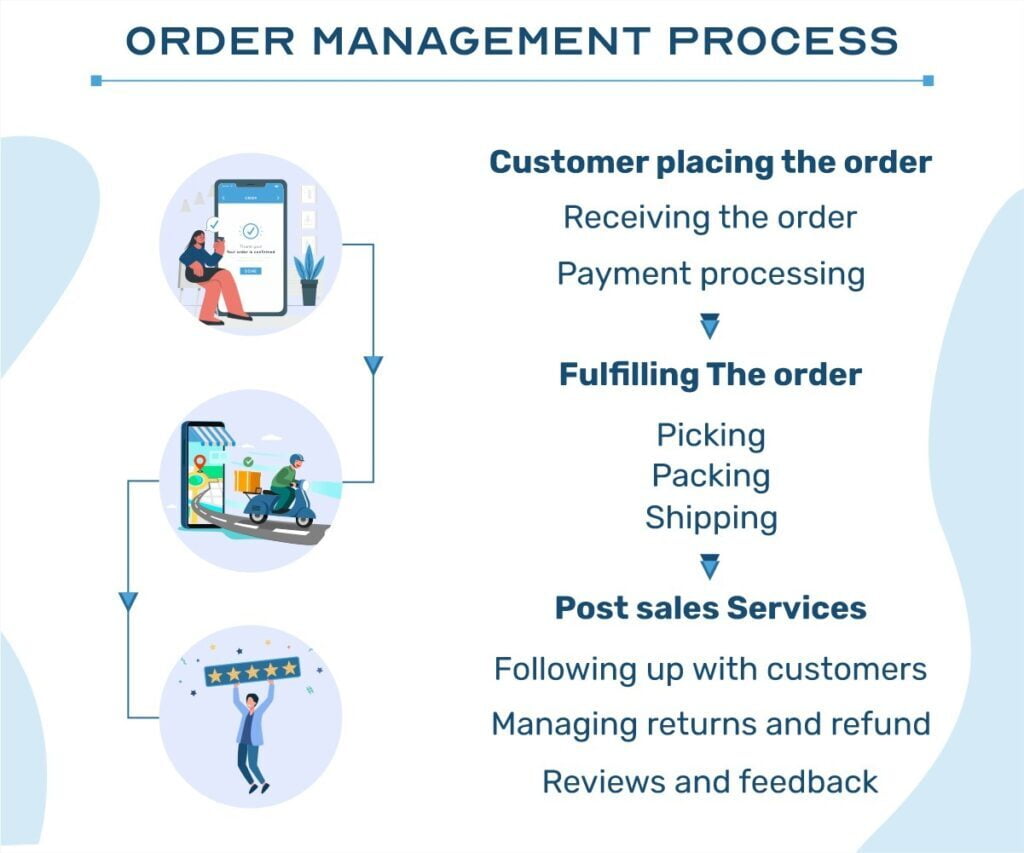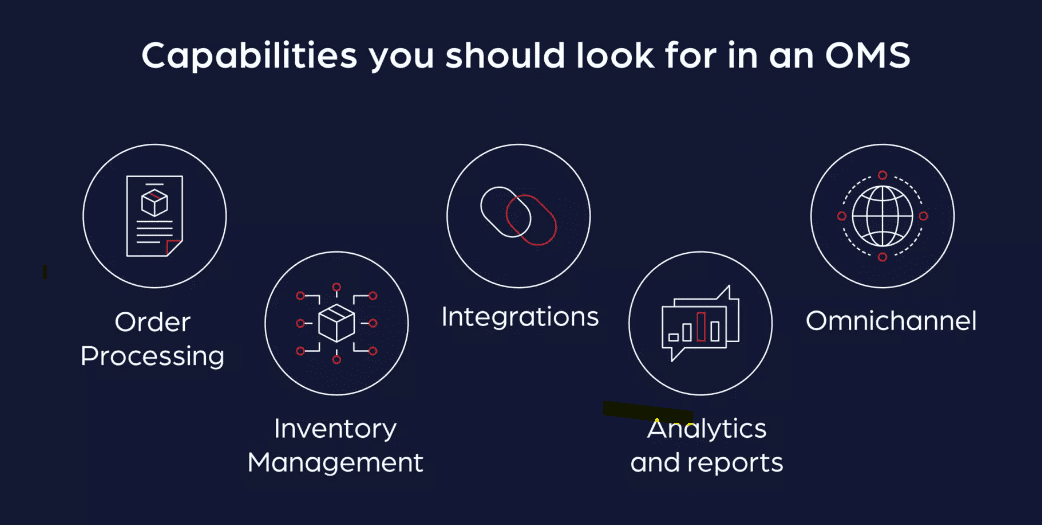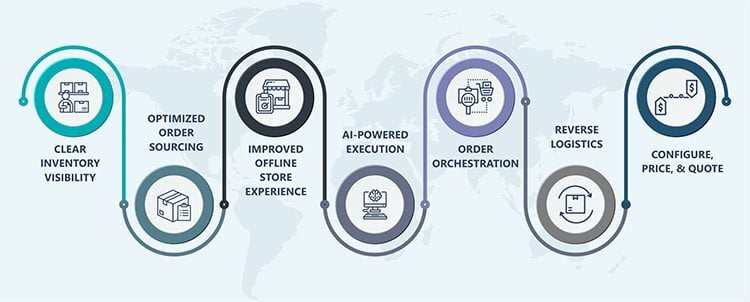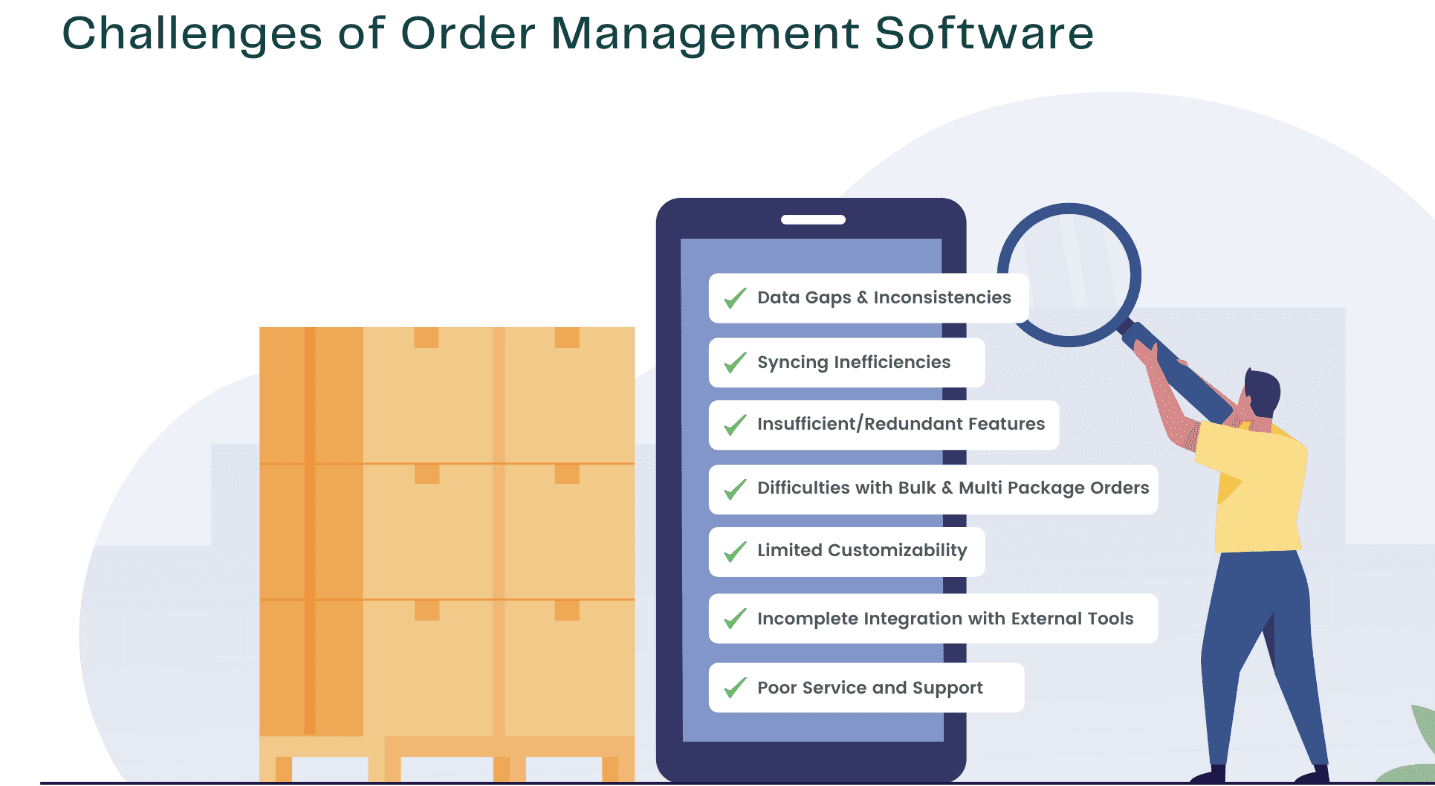
For any business, managing orders can be a difficult and time-consuming operation, but it is also a necessary one. From the time an order is placed until it is successfully delivered, an efficient order management system (OMS) can expedite the entire order process. This can increase customer satisfaction and revenue generation while saving time and resources. We'll cover a variety of advice and tactics in this blog post to assist you in setting up an effective order management system for your company.
The Basics of Order Management
Order management involves the process of receiving, processing, and fulfilling customer orders. It includes a range of tasks, from managing inventory to shipping and delivery, customer service, and payment processing. Proper order management ensures that businesses have the necessary resources to fulfill orders, reduce errors, and provide customers with a seamless experience.

Key Components for an Order Management System (OMS)
The key elements of an order management system (OMS) include:
Inventory management: Tracking inventory levels, setting reorder points, and alerting the business when it's time to reorder.
Order processing: Receiving, verifying, and fulfilling customer orders while reducing errors and improving the speed and accuracy of order fulfillment.
Shipping and delivery management: Providing real-time shipping rates, managing shipping labels, and tracking shipments.
Returns management: Managing returns, exchanges, and refunds while ensuring customer satisfaction.
Customer management: Collecting and storing customer data, including order history, contact information, and preferences.
Payment processing: Collecting and processing payments securely and efficiently.
Reporting and analytics: Generating reports and analyzing data to identify trends, track performance, and make informed decisions.
Integration: Integrating with other systems, such as accounting, shipping, and marketing tools.

Benefits of Effective Order Management

Common Challenges
Integrating an order management system (OMS) can be a complex and challenging process, especially for small businesses with limited resources and expertise. Here is a list of common challenges that small businesses may face during the integration process: and some tips for you to combat these:
- Data Migration: It can take a while and be difficult to get the data right when transferring existing order and inventory data into a new system. Small firms with few resources and employees may find this to be especially challenging because they may lack the essential knowledge or time to ensure that the data migration is carried out properly. A data migration expert can help ensure that the process of transferring your data goes smoothly. Make sure the OMS vendor offers adequate data migration help, including data mapping and data validation. To make sure that all data is correct and complete before going live, small businesses should also thoroughly evaluate the data migration process.
- System Integration: Small firms may use many systems for various tasks, including shipping companies, accounting software, and e-commerce platforms. It can be challenging and time-consuming to ensure that all these systems are effectively integrated with the OMS, which can cause delays in order processing and inventory management. To make sure that all systems are correctly connected, small businesses should maintain continuous communication with the OMS vendor and their other system suppliers. Zoho One offers a fully, integrated platform to manage all the departments of your business.
- Employee Training: The OMS must be adequately trained to all personnel who will use it, as any errors or misconceptions could result in errors in order processing and inventory management. Small organizations, on the other hand, might not have the funding for comprehensive training for every employee, which can result in ineffective operations and mistakes. Make sure all users of the OMS receive thorough training, including instruction on the OMS itself and any connected systems. To assist staff in properly using the system, small firms can also produce training materials like user manuals and training films.
- Technical Issues: The integration process may encounter technological challenges, which can be particularly challenging for small organizations with limited technical resources and knowledge. These problems can require outside professional assistance, which can be expensive and time-consuming. For the purpose of resolving any technical issues that come up throughout the integration process, small businesses should collaborate closely with the OMS vendor and any other technical support providers. Also, make sure your team includes experts of the system that can be used as guides for new users with no experience.

10 Tips to Improve Order Management
Tip 1: Implement an Order Management System (OMS)
Processes for order management can be automated and streamlined, which lowers errors and boosts productivity. Businesses can handle refunds and customer information in a centralized system, track orders, inventory, and shipments, and track orders, shipments, and inventory.
Tip 2: Streamline Order Fulfillment Process
Businesses can deliver orders more swiftly and precisely by streamlining their procedures, which will increase consumer satisfaction. Automating procedures like order processing, inventory control, and delivery is required for this.
Tip 3: Optimize Inventory Management
In order to manage stock levels optimally, stockouts, overstocking, and waste must be avoided. Businesses can cut expenses, decrease waste, and enhance order fulfillment by putting in place a strong inventory management system.
Tip 4: Use Data to Make Informed Decisions
Businesses can decide on order management procedures by carefully considering data on sales, inventory, and consumer behavior. Better inventory management, more precise demand forecasts, and more customer satisfaction can result from this.
Tip 5: Provide Excellent Customer Service
For client happiness and retention, providing great customer service is essential. This entails providing prompt customer service, easy return and exchange policies, and accurate and timely shipment information.
Tip 6: Ensure Accurate and Timely Shipping
For the consumer to be satisfied, shipment must be accurate and timely. Businesses may reduce delivery times and the possibility of shipping mistakes by utilizing a dependable shipping provider.
Tip 7: Develop Effective Communication Channels
For order management operations, efficient communication channels are essential, especially when handling client enquiries or shipment updates. Businesses may guarantee that clients can contact them quickly and easily by offering a variety of communication methods.
Tip 8: Proactively Manage Returns
Businesses can lessen the impact of returns on their order management procedures by handling returns proactively. This entails establishing explicit return policies, offering hassle-free returns, and conducting data analysis to pinpoint the primary causes of returns.
Tip 9: Monitor & Improve
Companies can find areas for improvement and lower the risk of mistakes or delays by consistently monitoring and improving order management systems. This entails monitoring important metrics and data analysis to spot areas that could use improvement.
Tip 10: Use Automation to Reduce Errors & Save Time
Automation can be a beneficial tool for businesses since it can save time and reduce errors by automating repetitive and manual processes. This involves order processing, inventory control, and delivery, among other things. Businesses can enhance their productivity and reduce the chance of mistakes by introducing automation, freeing up important time for their employees to focus on other critical duties. Furthermore, automation can allow businesses to grow their operations without dramatically increasing overhead costs.

